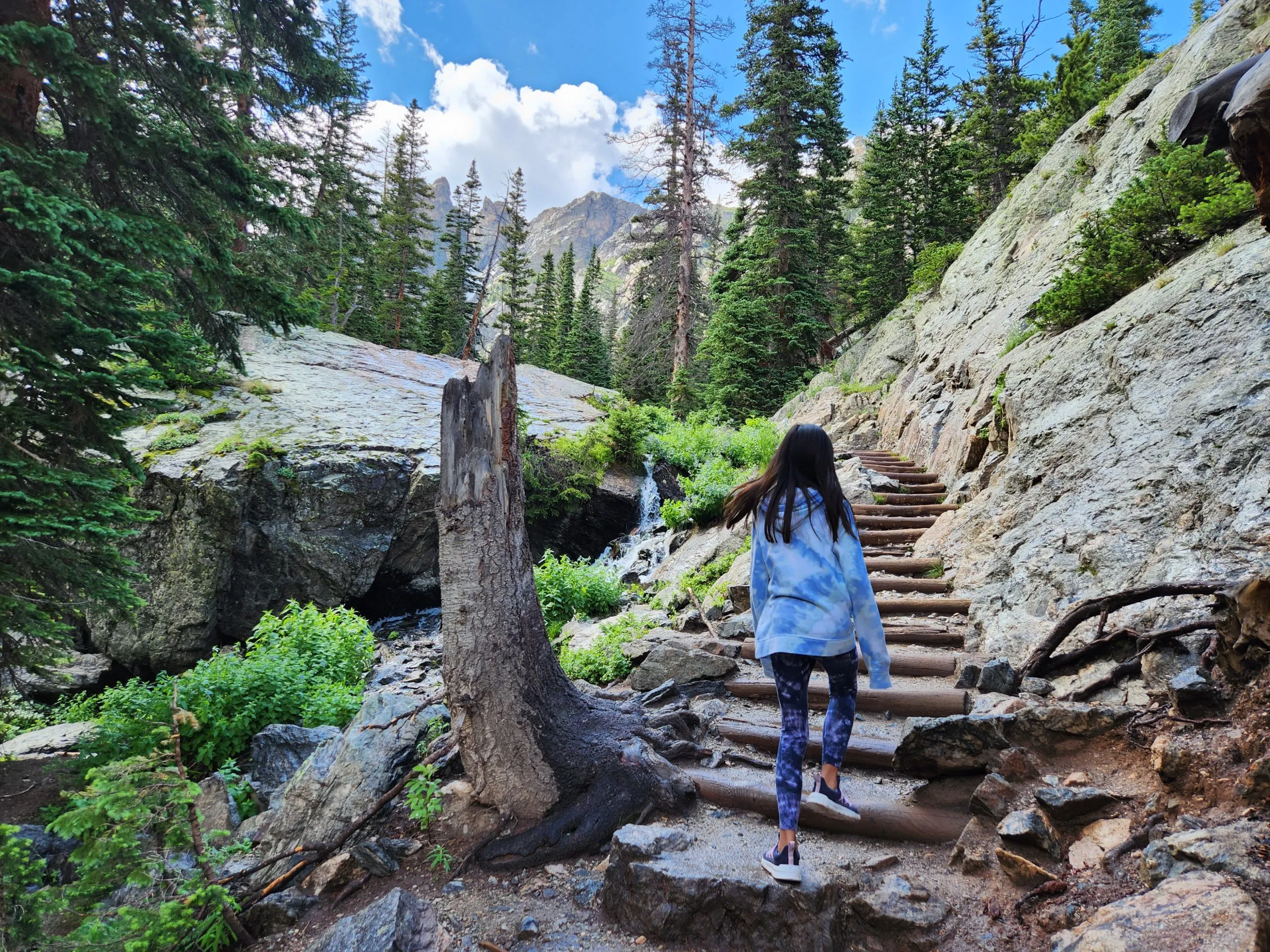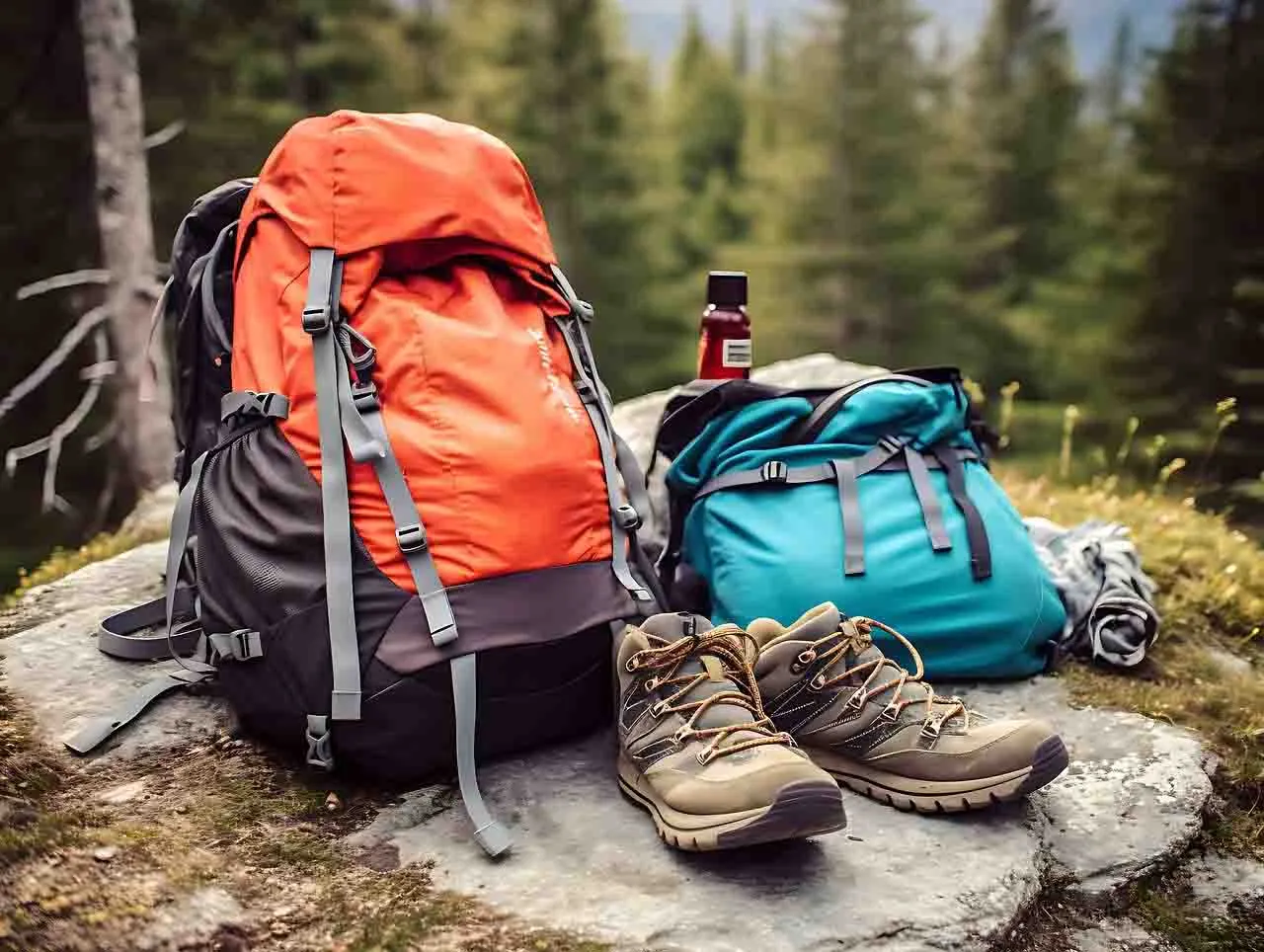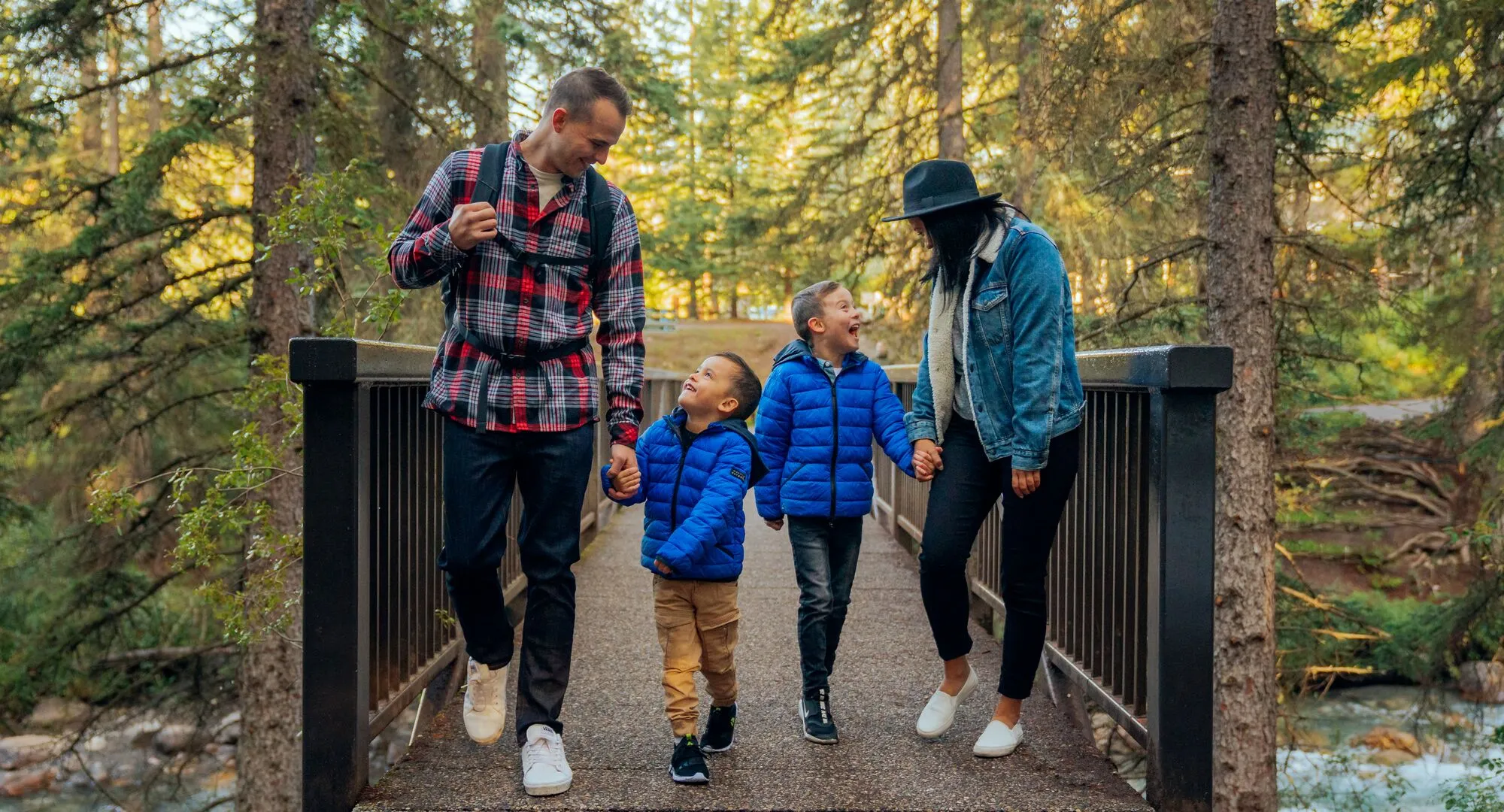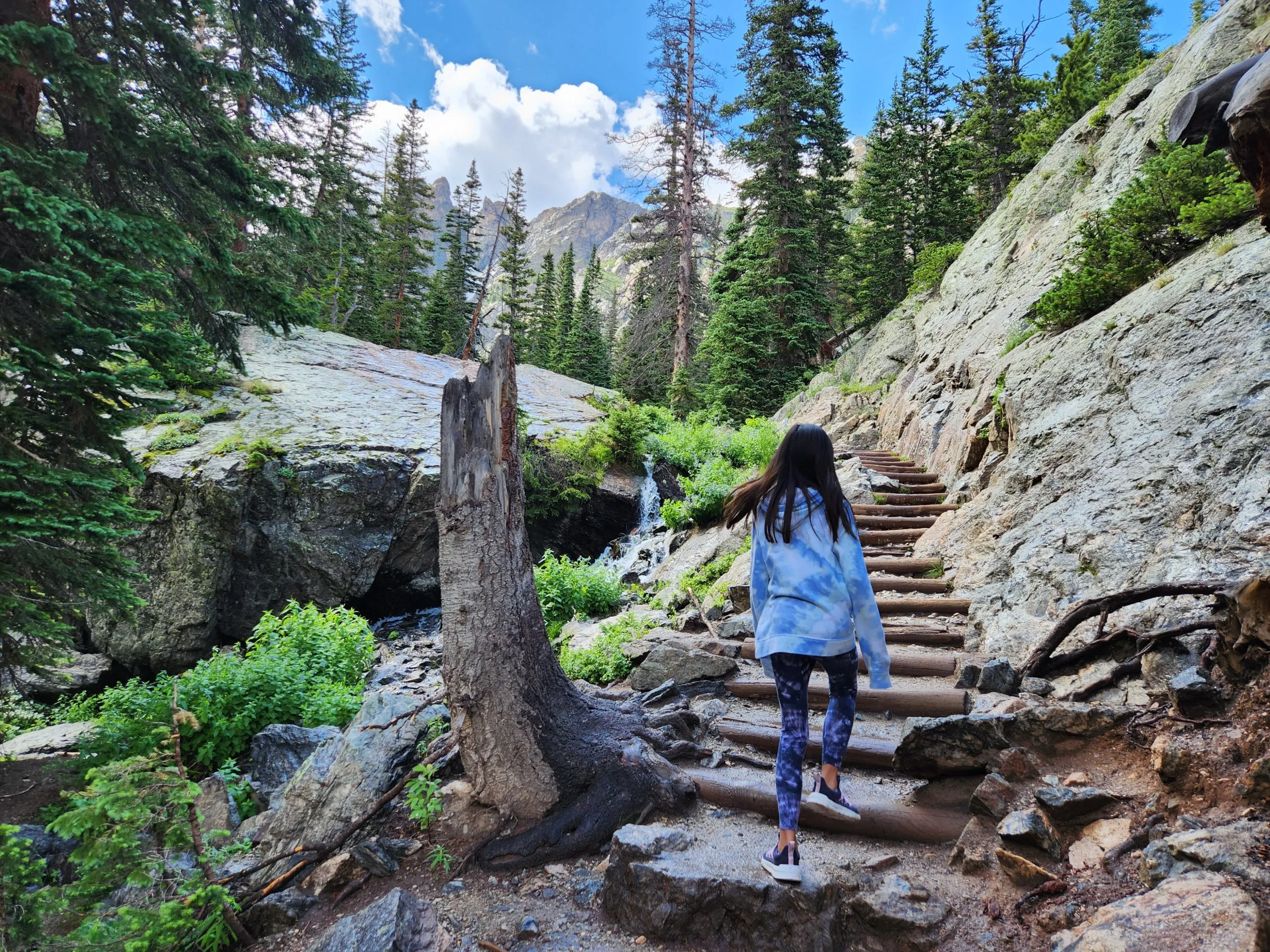
Best Beginner Hikes in US: Your Complete Guide to America's Most Accessible Trails
Welcome to Nature Guests! I'm here to share my personal journey discovering the best beginner hikes in US national parks and recreational areas. After years of exploring trails from coast to coast, I've curated this comprehensive guide to help new hikers experience America's natural beauty safely and confidently. From easy coastal walks to gentle mountain trails, these beginner-friendly adventures will ignite your passion for the outdoors.
Why I Fell in Love with Hiking as a Beginner
I still remember my first hiking experience vividly – it was a disaster! I wore cotton clothing, carried no water, and chose a trail way beyond my fitness level. But something magical happened during that humbling experience that transformed my perspective on outdoor adventures forever.
When I discovered the best beginner hikes in US national parks, everything changed. I learned that hiking doesn't have to be intimidating or require extreme athleticism. Some of my most memorable outdoor experiences have been on gentle trails that any beginner can conquer with proper preparation.
Through trial and error, I've discovered that the top beginner hikes in national parks offer the perfect introduction to America's natural wonders. These trails provide incredible rewards with minimal risk, making them ideal for building confidence and skills.
.webp)
The beauty of beginner hiking lies in accessibility. You don't need expensive gear or years of training to experience breathtaking waterfalls, stunning viewpoints, and peaceful forest walks. What you do need is the right information about which trails match your current abilities and interests.
I've personally hiked over 200 trails across the United States, and I can confidently say that some of the most spectacular views come from the easiest hikes. Whether you're interested in family-friendly hikes or solo adventures, there's a perfect trail waiting for you.
Essential Gear for Your First Hiking Adventures
Having the right gear transforms your hiking experience from uncomfortable to enjoyable. During my early hiking days, I made countless gear mistakes that taught me valuable lessons. Today, I want to share my hard-earned knowledge about essential equipment for the best beginner hikes in US trails.
The good news is that beginner hiking doesn't require expensive equipment. With a few carefully chosen items, you'll be prepared for most day hikes across America's beautiful landscapes. I always recommend starting with quality basics rather than buying everything at once.
Before heading out on any trail, I strongly suggest checking out my comprehensive first hike checklist to ensure you're properly prepared for your adventure.

Hiking Boots
Quality footwear is your foundation for safe hiking. I recommend starting with mid-height boots that provide ankle support and traction on various terrains.
Shop Hiking Boots on AmazonDay Pack
A comfortable 20-30L backpack is perfect for day hikes. Look for features like hydration compatibility and multiple pockets for organization.
Shop Day Packs on AmazonHydration System
Staying hydrated is crucial for safe hiking. I prefer hydration packs for hands-free drinking, especially on longer trails.
Shop Hydration Packs on AmazonTrekking Poles
These aren't just for advanced hikers! Trekking poles reduce strain on knees and improve stability, especially on uneven terrain.
Shop Trekking Poles on AmazonPro Tip: Start with basic gear and upgrade as you gain experience. The most expensive equipment won't help if you don't know how to use it properly!
Top 15 Best Beginner Hikes in US National Parks
After hiking hundreds of trails across America, I've carefully selected these 15 routes as the absolute best beginner hikes in US national parks and recreational areas. Each trail has been personally tested by me and offers unique rewards while maintaining beginner-friendly characteristics like moderate distances, well-maintained paths, and reasonable elevation gains.
Watch this inspiring video showcasing some of America's most accessible hiking trails
Easy Coastal Trails
1. Ship Harbor Trail - Acadia National Park, Maine
This 1.3-mile loop trail perfectly showcases Maine's rugged coastline without demanding technical skills. I've hiked this trail in all four seasons, and each visit reveals new natural treasures from tidepools to migrating birds.
Distance: 1.3 miles | Elevation Gain: Minimal | Difficulty: Easy
2. Lands End Trail - San Francisco, California
Located on San Francisco's western edge, this 3.4-mile loop offers spectacular Pacific Ocean views and Golden Gate Bridge panoramas. The well-maintained path makes it accessible for all skill levels.
Distance: 3.4 miles | Elevation Gain: 538 feet | Difficulty: Easy to Moderate
3. Ozette Loop Trail - Olympic National Park, Washington
This unique 9-mile boardwalk and beach trail combines old-growth forest with pristine Pacific coastline. Despite its length, the flat terrain and fascinating ecosystem make it ideal for beginners willing to spend a full day outdoors.
Distance: 9 miles | Elevation Gain: Minimal | Difficulty: Easy (but long)

Mountain Trails for Beginners
4. Bear Lake Nature Trail - Rocky Mountain National Park, Colorado
This half-mile loop around a stunning alpine lake offers breathtaking mountain views with minimal effort. I recommend arriving early to secure parking and enjoy peaceful morning reflections on the water.
Distance: 0.5 miles | Elevation Gain: Minimal | Difficulty: Easy
5. Lower Yosemite Fall Trail - Yosemite National Park, California
Experience one of the world's tallest waterfalls on this nearly flat one-mile loop. Spring visits reward hikers with thundering water flow, while winter offers peaceful snowy landscapes and fewer crowds.
Distance: 1 mile | Elevation Gain: Minimal | Difficulty: Easy
6. Avalanche Lake Trail - Glacier National Park, Montana
This 5-mile round trip hike leads to a spectacular alpine lake surrounded by towering peaks and cascading waterfalls. The moderate difficulty makes it perfect for ambitious beginners ready to challenge themselves.
Distance: 5 miles | Elevation Gain: 730 feet | Difficulty: Moderate
7. Taggart Lake Loop - Grand Teton National Park, Wyoming
This 3.8-mile loop offers incredible Teton Range views with moderate elevation gain. The crystal-clear alpine lake provides a perfect lunch spot with mountain reflections that create postcard-worthy photographs.
Distance: 3.8 miles | Elevation Gain: 400 feet | Difficulty: Easy to Moderate
8. Emerald Pools Trail - Zion National Park, Utah
Three different pools offer varying difficulty levels, making this trail system perfect for testing your limits. I recommend starting with the Lower Pool (1.2 miles) before progressing to Middle and Upper pools.
Distance: 1.2-3 miles | Elevation Gain: 70-350 feet | Difficulty: Easy to Moderate
9. Grotto Falls Trail - Great Smoky Mountains National Park, Tennessee
This 2.5-mile round trip leads to a unique waterfall you can walk behind. The well-maintained trail through lush forest showcases the biodiversity that makes the Smokies a UNESCO World Heritage Site.
Distance: 2.5 miles | Elevation Gain: 500 feet | Difficulty: Easy to Moderate
Desert Hiking for New Adventurers
10. Horseshoe Bend Trail - Page, Arizona
This iconic 1.5-mile round trip hike leads to one of America's most photographed natural landmarks. The flat, sandy trail is accessible year-round, though I recommend early morning or late afternoon visits to avoid crowds and heat.
Distance: 1.5 miles | Elevation Gain: 150 feet | Difficulty: Easy
11. Arch Rock Trail - Joshua Tree National Park, California
Experience the otherworldly landscape of the Mojave Desert on this 1.5-mile lollipop loop. The trail showcases unique rock formations and desert flora while remaining accessible for beginners with proper preparation.
Distance: 1.5 miles | Elevation Gain: Minimal | Difficulty: Easy
12. Canyon Overlook Trail - Zion National Park, Utah
This short but rewarding 1-mile round trip offers spectacular views of Zion Canyon. Despite being one of the easier hikes in the park, the overlook provides breathtaking vistas that rival more challenging trails.
Distance: 1 mile | Elevation Gain: 163 feet | Difficulty: Easy

Additional Outstanding Beginner Trails:
- 13. Rim Trail - Grand Canyon National Park, Arizona: 12+ miles of mostly flat, paved trail with unlimited customization options
- 14. Congress Trail - Sequoia National Park, California: 2-mile loop among the world's largest trees
- 15. Hall of Mosses - Olympic National Park, Washington: 0.8-mile loop through enchanting old-growth rainforest
These trails represent just a fraction of the incredible best beginner hikes in US parks and recreation areas. Each offers unique rewards while maintaining beginner-friendly characteristics. For families with children, I especially recommend checking out my guide to hiking with kids tips before embarking on your first family adventure.
Safety Tips Every Beginner Hiker Should Know
Safety should always be your top priority when exploring the best beginner hikes in US wilderness areas. Through my years of hiking experience, I've learned that proper preparation and awareness prevent most outdoor emergencies. These essential safety guidelines will help ensure your hiking adventures remain positive and memorable.
Tell Someone Your Plans
Always inform a trusted person about your hiking destination, planned route, and expected return time. This simple step could save your life if you encounter unexpected difficulties on the trail.
Include specific trailhead locations and backup contact information.
Check Weather Conditions
Weather can change rapidly in mountainous and coastal areas. I always check multiple weather sources and prepare for conditions worse than predicted, especially during shoulder seasons.
Mountain weather can be 20-30 degrees colder than valley temperatures.
Hydration is Critical
Dehydration is one of the most common hiking emergencies. I carry more water than I think I'll need and drink regularly throughout the hike, even when I don't feel thirsty.
General rule: 1 liter per 2 hours of hiking, more in hot weather.
Stay on Designated Trails
Marked trails exist for your safety and to protect fragile ecosystems. Shortcutting or creating new paths damages the environment and increases your risk of getting lost.
Follow Leave No Trace principles to preserve trails for future hikers.
Emergency Communication
Cell service is unreliable in many wilderness areas. Consider carrying a whistle, satellite communicator, or personal locator beacon for emergency situations on remote trails.
Three whistle blasts is the universal distress signal.
Basic First Aid Knowledge
Learn basic first aid techniques before hitting the trails. Knowing how to treat blisters, cuts, sprains, and other common hiking injuries can prevent minor issues from becoming major problems.
Carry a basic first aid kit and know how to use everything in it.
Wildlife Safety Guidelines
Different regions require specific wildlife awareness. In bear country, carry bear spray and make noise on the trail. In areas with venomous snakes, watch where you step and sit. Always maintain safe distances from all wildlife, no matter how harmless they appear.
Remember: You are a visitor in their home. Respect wildlife by observing from a distance and never feeding animals.
These safety principles have kept me safe through hundreds of hiking adventures across the United States. While the best beginner hikes in US parks are generally very safe, proper preparation and awareness ensure that your outdoor experiences remain positive and memorable for all the right reasons.
Planning Your First Hiking Trip
Proper planning transforms a potentially stressful hiking experience into an enjoyable adventure. After years of exploring the best beginner hikes in US destinations, I've developed a systematic approach to trip planning that ensures success and safety on every outdoor excursion.
Timing Your Adventure
Choose the right season and time of day for your hiking experience. Spring and fall generally offer the most comfortable conditions, while early morning starts help you avoid crowds and afternoon thunderstorms.
I recommend starting with shorter hikes during cooler months to build confidence and fitness. Many of the best beginner hikes in US national parks are accessible year-round, but each season offers unique rewards and challenges.
Choosing Your Hiking Partners
Hiking with experienced partners provides valuable learning opportunities and increased safety. However, ensure that your group shares similar fitness levels and hiking goals to prevent conflicts on the trail.
Solo hiking can be incredibly rewarding, but I recommend gaining experience on popular, well-marked trails before venturing out alone on more remote routes.
Research and Route Selection
Study trail maps, recent trip reports, and park websites before departure. Understanding trail conditions, difficulty ratings, and potential hazards helps you make informed decisions about route selection and gear requirements.
I always have a backup trail option in case my primary choice is closed or overcrowded. Flexibility in planning leads to better hiking experiences and reduced stress when unexpected situations arise.
Transportation and Logistics
Plan your travel route to trailheads, including parking availability and fees. Many popular hiking destinations have limited parking that fills up early during peak seasons.
Consider shuttle services, park transportation, or carpooling options for popular trails. Some of the most accessible hiking areas actually require advance planning for parking and permits.
Pre-Hike Preparation Checklist
- Check weather forecast and trail conditions
- Inform someone of your hiking plans
- Prepare and test all gear
- Download offline maps and trail apps
- Pack sufficient food and water
- Charge electronic devices
- Review park regulations and permits
- Plan arrival and departure times
Remember that thorough planning doesn't guarantee a perfect hiking experience, but it significantly increases your chances of success and safety. The most important aspect of planning is maintaining flexibility while prioritizing safety and enjoyment over rigid adherence to original plans.
For additional guidance on preparing for your outdoor adventures, be sure to visit my comprehensive best beginner hikes in US resource page, which includes detailed information about each recommended trail along with current conditions and seasonal considerations.
Conclusion
Discovering the best beginner hikes in US has been one of the most rewarding aspects of my outdoor journey. From the dramatic coastlines of Acadia to the towering sequoias of California, these accessible trails prove that you don't need advanced skills or expensive equipment to experience America's most beautiful landscapes.
The fifteen trails featured in this guide represent just the beginning of your hiking adventure. Each offers unique rewards while maintaining beginner-friendly characteristics that build confidence and inspire further exploration. Whether you're drawn to coastal walks, mountain vistas, or desert landscapes, there's a perfect trail waiting for your first steps.
Remember that every experienced hiker started as a beginner. The key is choosing appropriate trails, preparing properly, and prioritizing safety over speed or distance. With the right mindset and preparation, these best beginner hikes in US parks will create lasting memories and perhaps ignite a lifelong passion for outdoor exploration.
Start Your Journey Today
Choose one trail from this guide and plan your first hiking adventure. The hardest part is taking that first step onto the trail.
Join the Community
Connect with other beginner hikers through local hiking groups, online forums, and social media communities dedicated to outdoor adventures.
Protect What You Love
Practice Leave No Trace principles to preserve these beautiful trails for future generations of hikers to enjoy and explore.
Ready to explore more incredible hiking destinations?
Visit our comprehensive collection of hiking guides, trail reviews, and outdoor adventure tips to plan your next unforgettable journey into America's most beautiful wilderness areas.

